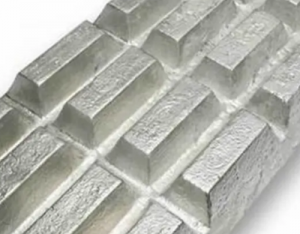Magnesium-Scandium Master Alloy: Transforming Lightweight Metals

Introduction
The pursuit of materials that offer both reduced weight and enhanced performance has been a driving force behind innovation in various industries, ranging from aerospace to automotive manufacturing. In this exploration, we will delve into the remarkable properties, diverse applications, and transformative potential of magnesium-scandium (Mg-Sc) master alloys, shedding light on their pivotal role in shaping the future of materials engineering.

Magnesium-Scandium Master Alloys
Unlocking the Potential of Magnesium-Scandium Alloys
--Exceptional Strength-to-Weight Ratio:
One of the defining characteristics of magnesium is its low density, making it one of the lightest structural metals. However, pure magnesium often falls short when it comes to meeting the stringent strength requirements of demanding applications. This is precisely where scandium, an element that might not be as well-known as magnesium, emerges as a game-changer. When added as a master alloy, scandium significantly enhances the mechanical properties of magnesium, resulting in alloys that offer an exceptional strength-to-weight ratio. This unique combination of lightness and strength has opened doors to a wide array of innovative applications across industries.
--Aerospace Advancements:
The aerospace industry, in particular, has been a major beneficiary of magnesium-scandium alloys. These alloys have found their way into critical aircraft components where weight reduction is paramount for achieving fuel efficiency and overall performance. By incorporating magnesium-scandium alloys into the construction of aircraft, aerospace engineers have successfully reduced the weight of structural parts without compromising on strength, durability, or safety. This breakthrough has contributed significantly to the ongoing quest for more efficient and eco-friendly air travel.
--Automotive Innovations:
In the automotive sector, the drive to reduce vehicle weight stands as a central strategy for improving fuel efficiency and minimizing emissions. Magnesium-scandium alloys have made significant inroads into automotive manufacturing, particularly in the production of lightweight engine components, transmission housings, and various chassis parts. These alloys enable automakers to create vehicles that are not only more fuel-efficient but also exhibit better handling and overall performance.
--Sporting Equipment:
Athletes and sports enthusiasts have also reaped the benefits of magnesium-scandium alloys, which have been employed in the construction of sporting equipment such as bicycles, golf clubs, tennis rackets, and more. These alloys provide the durability, rigidity, and performance characteristics required for high-performance sports gear. The reduced weight of sporting equipment contributes to enhanced agility and endurance for athletes.
--Biomedical Applications:
The field of biomedicine is another arena where magnesium-scandium alloys are gaining recognition. These alloys exhibit excellent biocompatibility, making them potential candidates for use in orthopedic implants, where reduced implant weight can enhance patient comfort and accelerate the recovery process. The combination of strength and biocompatibility positions these alloys as promising materials for the development of advanced medical devices and implants.
--Space Exploration:
As humanity's ambitions for space exploration continue to expand, the demand for materials that are both lightweight and exceptionally strong becomes increasingly crucial. Magnesium-scandium alloys are being considered for spacecraft and satellite applications, where their weight-saving properties are instrumental in reducing launch costs and enabling more efficient space missions. These alloys play a vital role in achieving the delicate balance between payload capacity and mission feasibility.
Challenges and Future Prospects
While the potential of magnesium-scandium alloys is undeniably impressive, some challenges must be addressed. Scandium is a relatively rare element, and its limited availability can pose supply chain constraints. However, ongoing research and development efforts are focused on optimizing alloy compositions, manufacturing processes, and applications. Efforts to develop efficient extraction and production methods for scandium are also underway, to address these limitations.
Conclusion
The future of magnesium-scandium master alloys holds great promise. As industries increasingly prioritize sustainability, efficiency, and innovation, magnesium-scandium alloys are well-positioned to play a pivotal role in achieving these goals by enabling the creation of lighter, stronger, and more environmentally friendly products and technologies. Advanced Refractory Metals (ARM) serves as a key provider of magnesium-scandium master alloys. Send us an inquiry if you are interested.
{{item.content}}
LEVE A REPLY
{{item.children[0].content}}
{{item.content}}






